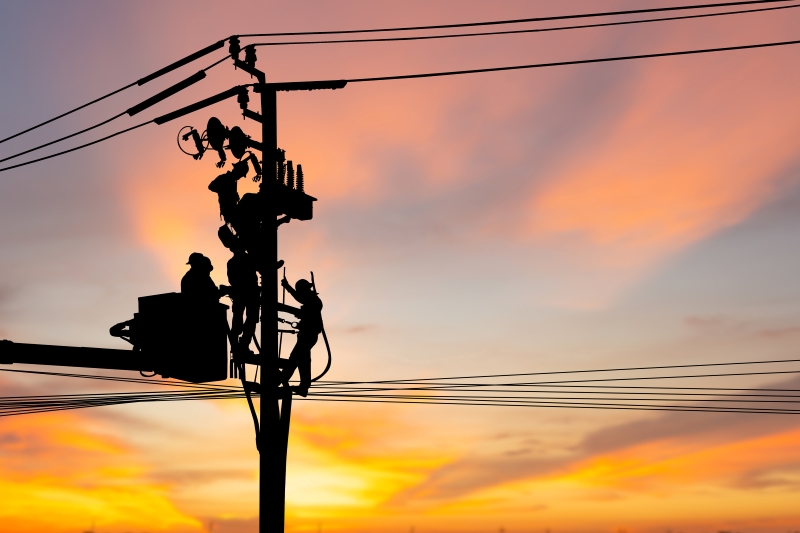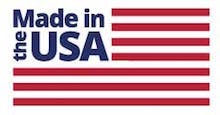The History of Electrical Safety Standards
The need for electrical safety began in 1882 when Thomas Edison created the first commercial electrical power system that produced direct current electricity (DC) and later provided electricity for all of New York City. This system generated 100 kilowatts of electricity, lighting 50 incandescent lamps, but had the ability to light 1200 lamps. Years later, Nicola Tesla and George Westinghouse created a new power system called the alternating current (AC), which could transfer power through longer distances. Unfortunately, developing these electrical advancements also brought dangerous hazards, like the first electrical shock caused by an industrial generator.
Five electrical safety codes were quickly created and adopted in 1895 to ensure all electrical installations would be conducted under a safe work environment. However, this caused complications when workers found it difficult to maintain the same standard for a variety of different jobs/applications. In response, the National Electrical Code (NEC) was created. Later sponsored by the NFPA, the NEC® is a set of electrical code requirements every person working in the electrical industry must follow while conducting electrical installations.
Electrical safety standards continued to improve for workers. In the 1950s, Charles Dalziel, an electrical engineering professor, studied the effects of electricity on humans – specifically electric shock. His research revealed that most fatalities were caused by ground faults, and this discovery led to the development of the ground-fault circuit interpreter or GFCI outlets and breakers commonly used in bathrooms and kitchens to reduce the risk of electrical shock. After learning about Dalziel’s research, the NEC® made GFCI a requirement, significantly lowering the number of electrical-shock-related deaths.
In 1970, the Occupational Safety and Health Administration (OSHA) was created after the US Congress passed the Occupational Safety and Health Act to ensure a safe work environment through education and training. Seeking to update the existing electrical safety standards, OSHA requested that the National Fire Protection Association (NFPA) develop the new standards, and in 1979, the NFPA 70E set of Standards for Electrical Safety Requirements for Employee Workplaces was established and adopted.
What Exactly is “Arc flash?”
Simply put, an arc flash is a phenomenon where a flashover of electric current leaves its intended path and travels through the air from one conductor to another, or to ground. The results are often violent and when a human is in close proximity to the arc flash, serious injury and even death can occur. Arc flash can be caused by many things including: dust, dropping tools, accidental touching, condensation, material failure, corrosion, faulty Installation, and others. Three factors determine the severity of an arc flash injury: proximity of the worker to the hazard, temperature, and time for the circuit to break.
Arc flash is a type of electrical explosion or discharge. Temperatures at the source of an arc flash can reach 20,000 °C — around four times the surface of the sun.
Injuries can include external burns, internal burns and intoxication from inhaling hot gases and vaporized metal, hearing damage, eye damage and blindness from the ultraviolet light of the flash as well as many other devastating injuries.
When there is a rapid expansion of air and vaporized material from arc flash, an arc blast may occur. The explosive force from an arc blast can exceed 100 kiloPascal (kPa), causing the propulsion of molten metal, equipment parts and debris speeds of up to 300 meters per second.
Today’s Standards for Testing/Certifying Textile Components in Arc Flash PPE
There are 2 main testing standards for certifying textiles used in the manufacturing of arc flash personal protection equipment and systems. These standards address fabrics utilized in protective clothing and protective equipment/gear (typically the heavier/stronger of the two). In the case of narrow fabrics, clothing would include elastics, tapes, trims, and light tubes; whereas protective equipment would typically cover tests for webbing and heavier tubes. The tests – issued by the American Society for Testing and Materials (ASTM) are as follows:
ASTM F1959 – Standard Test Method for Determining Arc Thermal Performance (Value) of Textile Materials for Clothing by Electric Arc and Related Thermal Hazards
This is the standard test method used to calculate quantitative results (arc ratings) for FR fabrics. Arc ratings are a measure of thermal protection provided by the fabric in an arc flash.
The purpose of this test method is to determine how much heat a certain fabric (or system of fabrics) will block from an electric arc before the onset of second degree burns for the wearer.
ASTM F887 – Standard Test for Arc Thermal Performance of Personal Climbing and Fall protection Equipment.
These standards measure the amount of energy blocked by the fabric as quantified by Arc Thermal Performance Value (commonly abbreviated as ATPV). The value is reported as Energy Breakopen Threshold (Ebt) if the fabric breaks open before the onset of second-degree burns is reached.
Arc flash testing to the ASTM F887 Standard is required by OSHA 1910.269 for workers exposed to an arc flash hazard. Finished products, including harnesses, lanyards, and accessories are tested at a 40 cal/cm² exposure level and evaluated for melting and dripping and ignition. There are also post-arc drop tests that must be performed for deployment compliance using the ANSI/ASSE/ASSP Z359 standards.
Ensuring the Quality and Performance of Arc Flash Textiles
AT OTEX, because the performance targets for these textiles very closely resemble the needs of Fire Safety Protective garments and gear (much of why OSHA turned to the NFPA to draft the tests/standards), we use many of the same materials (fibers and finishes) and constructions in the design and manufacturing of Specialty Narrow Fabrics used for Arc Flash safety applications. In fact, many styles are classified as “Dual Hazard” compliant (arc flash)/certified (flame resistance).
Common fibers used in these fabrics include:
- Para Aramids (Kevlar®, Twaron®, Technora®, etc.)
- Meta Aramids (Nomex®)
- Polybenzimidazole (PBI)
- Polyoxazole (Zylon®)
- Vectran®
- Fire resistant Polyester and/or Nylon
OTEX Specialty Narrow Fabrics® is a longstanding leader in the design and manufacture of specialty textile components for both Electrical Safety and Fire Safety industries (among others). As an AS9100D certified manufacturer, there is nothing that thrills us more than collaborating with the engineers from both sectors, in order to create new and exciting equipment that will help protect, and save the lives of hard working men and women.
If you would like to learn more about the interesting and innovative products that we continue to develop for this, and other, mission-critical industries, please explore our website, or contact us directly. Our research and development team and/or sales staff, would love to hear from you and explore your own unique Specialty Narrow Fabric needs.



